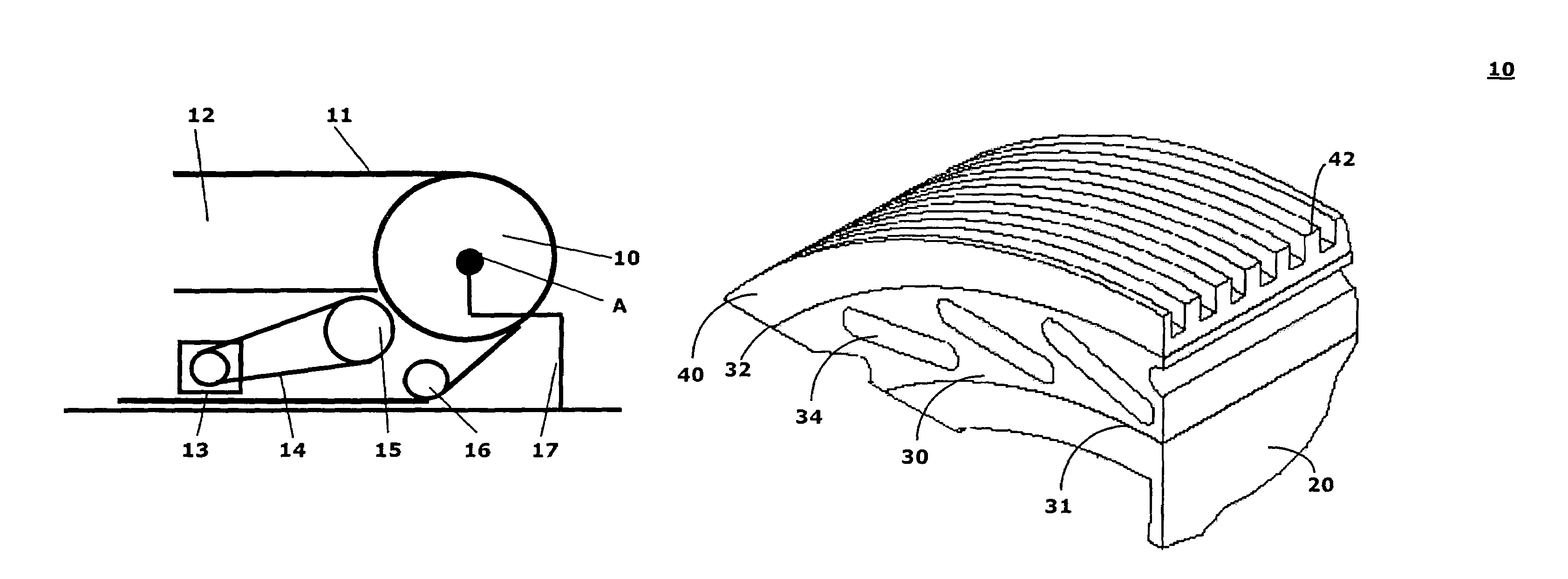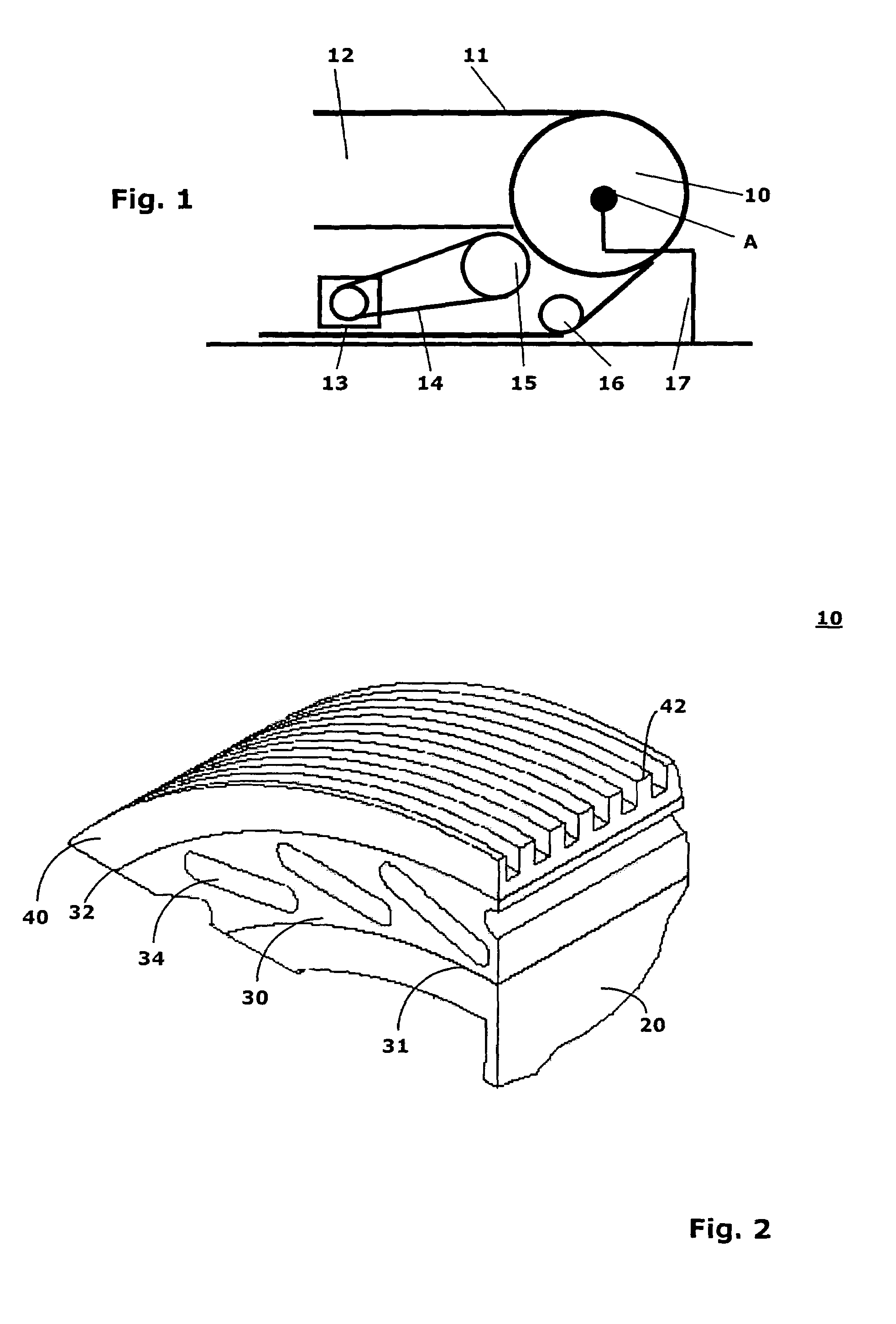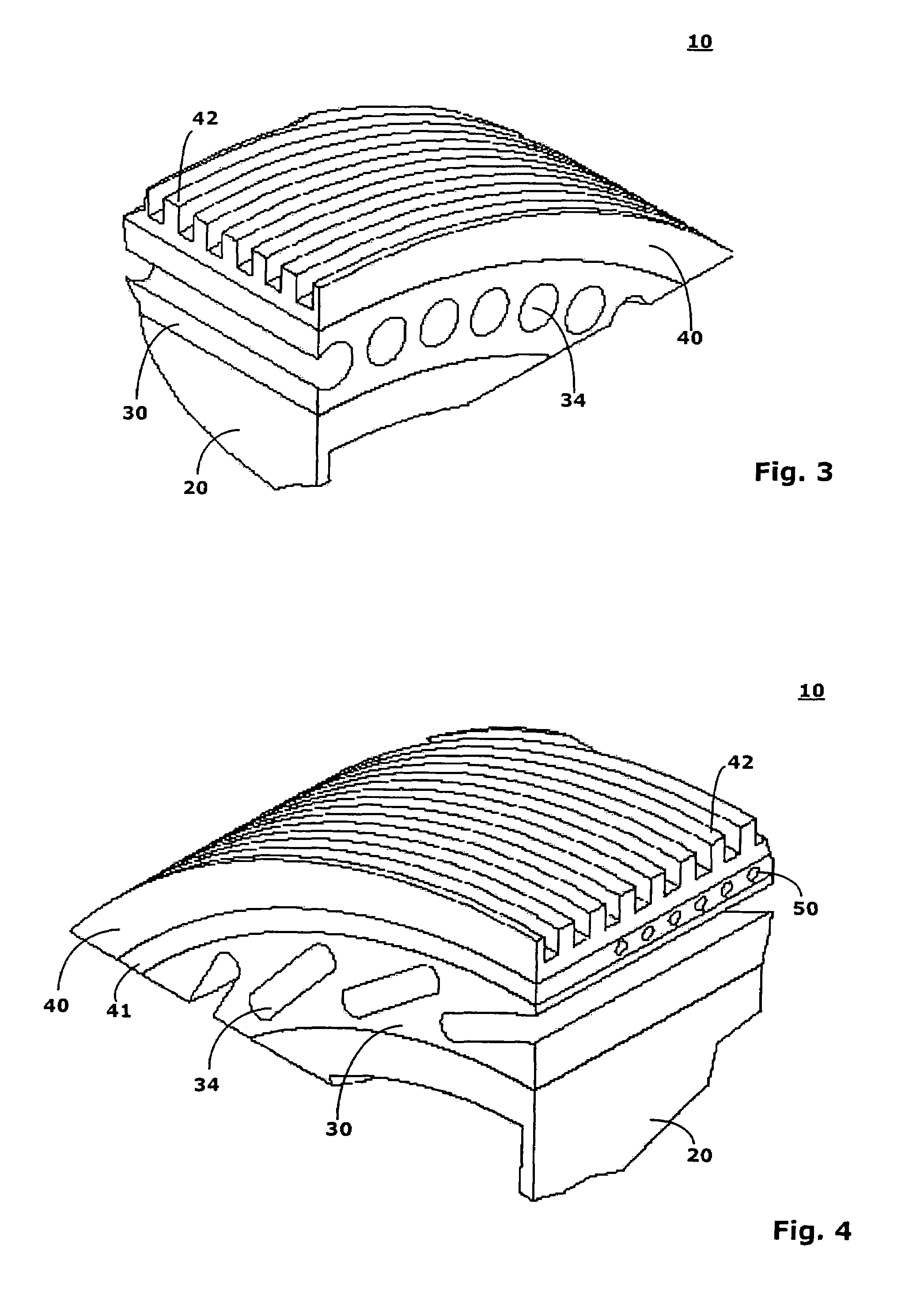Wheel for driving a flexible handrail
- Summary
- Abstract
- Description
- Claims
- Application Information
AI Technical Summary
Benefits of technology
Problems solved by technology
Method used
Image
Examples
Embodiment Construction
[0028]FIG. 1 shows a wheel 10 according to the invention that can be turned about an axis of rotation A and drives a handrail 11. The handrail 11 is located on the upper edge of a balustrade 12 that is arranged at the side of not-shown step elements of the escalator or moving walk. The handrail 11 lies longitudinally at almost 180° to the wheel 10. Driving of the wheel 10 takes place, for example, by means of a motor 13 via an endless element 14 and a drive wheel 15. The wheel 10 is fastened in a conventional manner to a locationally fixed supporting construction 17.
[0029]FIG. 2 shows a wheel according to the invention that has an inner layer 20, an intermediate layer 30, and an outer layer 40.
[0030]The inner layer 20 forms a relatively stiff or rigid base body that may be formed in an integral manner with a not-shown rim body of the wheel 10 or fastened to such a rim body. The inner layer or base body 20 can be made, for example, of PA-GF30, PP-GF30, PA-G, or of another suitable ma...
PUM
 Login to View More
Login to View More Abstract
Description
Claims
Application Information
 Login to View More
Login to View More - R&D
- Intellectual Property
- Life Sciences
- Materials
- Tech Scout
- Unparalleled Data Quality
- Higher Quality Content
- 60% Fewer Hallucinations
Browse by: Latest US Patents, China's latest patents, Technical Efficacy Thesaurus, Application Domain, Technology Topic, Popular Technical Reports.
© 2025 PatSnap. All rights reserved.Legal|Privacy policy|Modern Slavery Act Transparency Statement|Sitemap|About US| Contact US: help@patsnap.com



